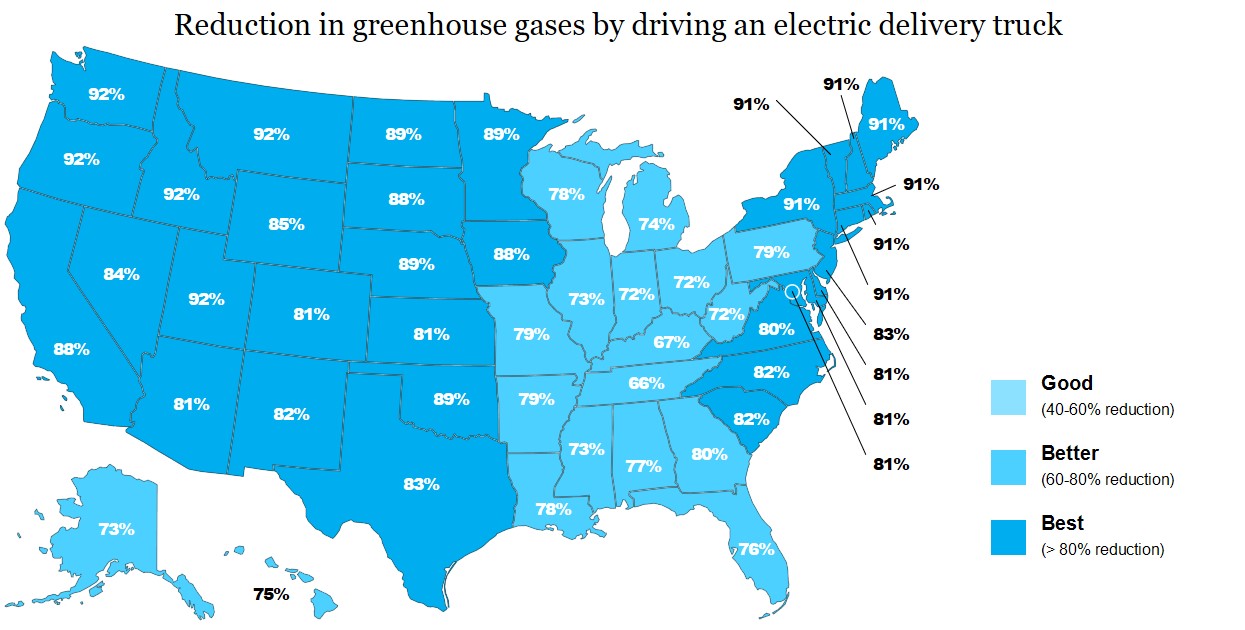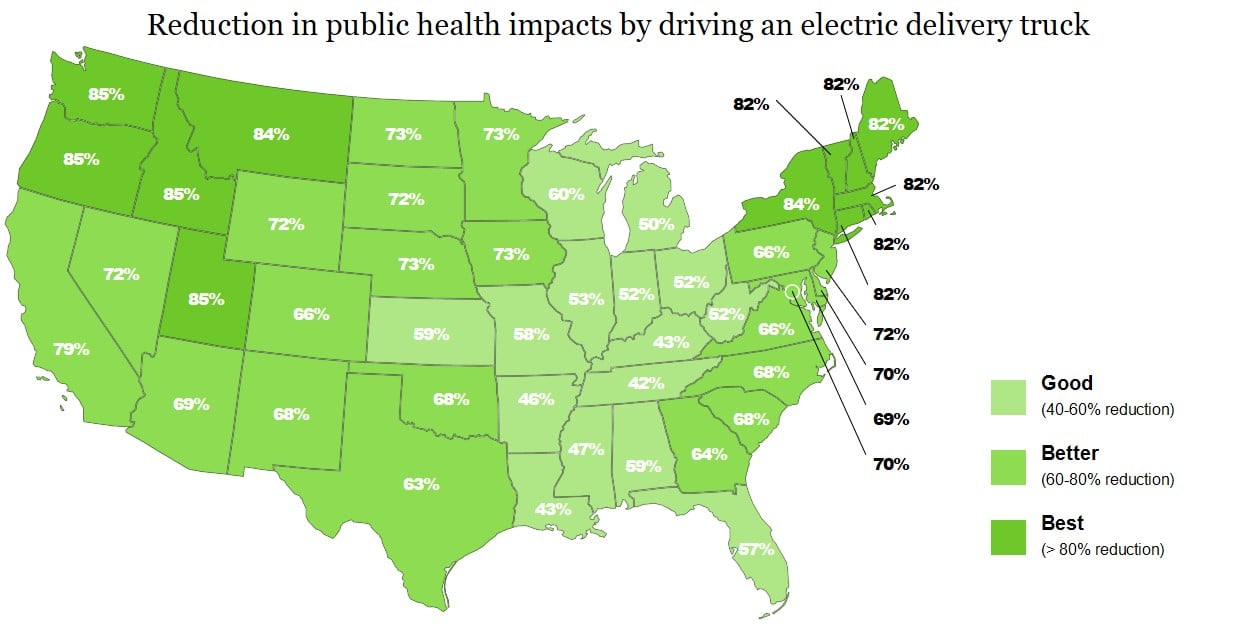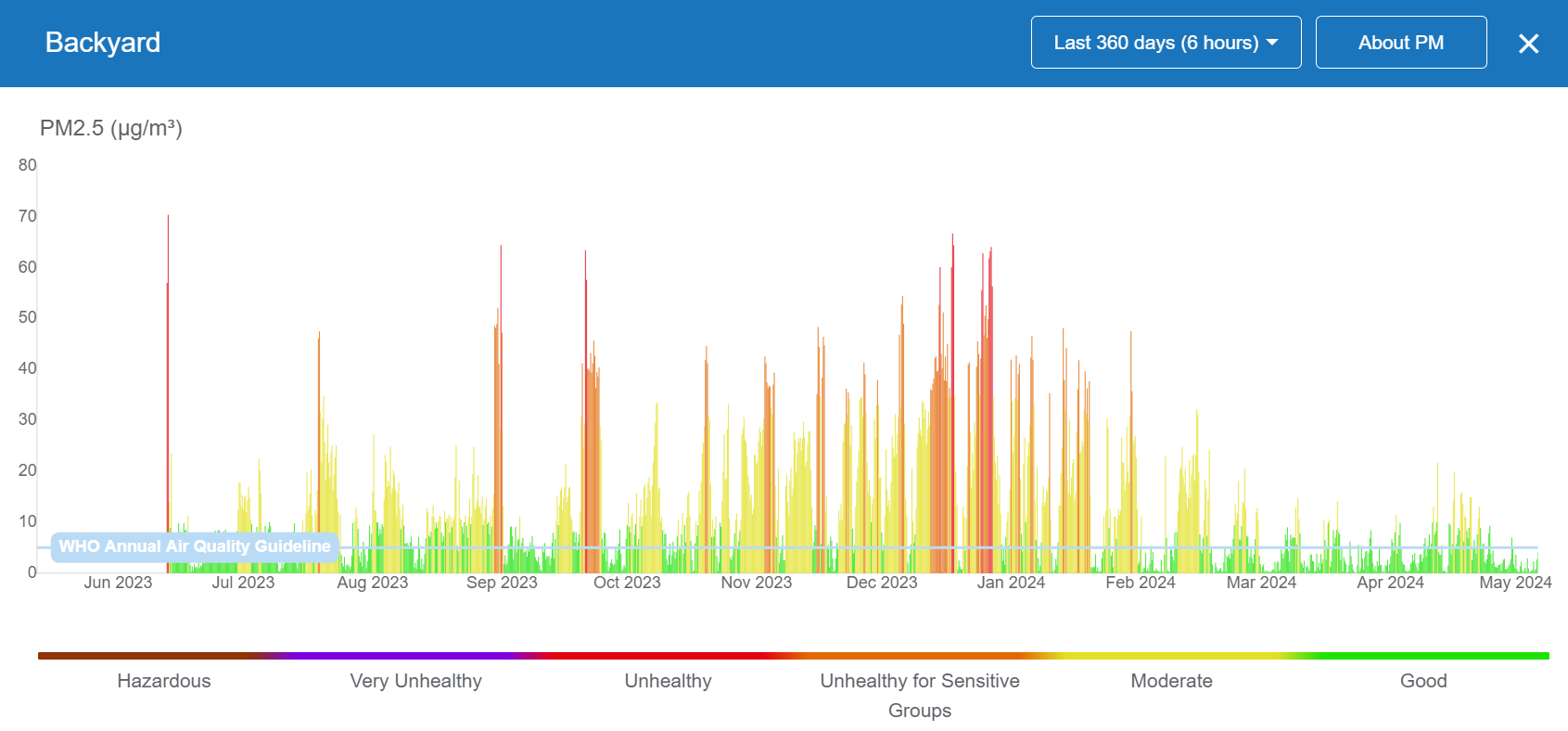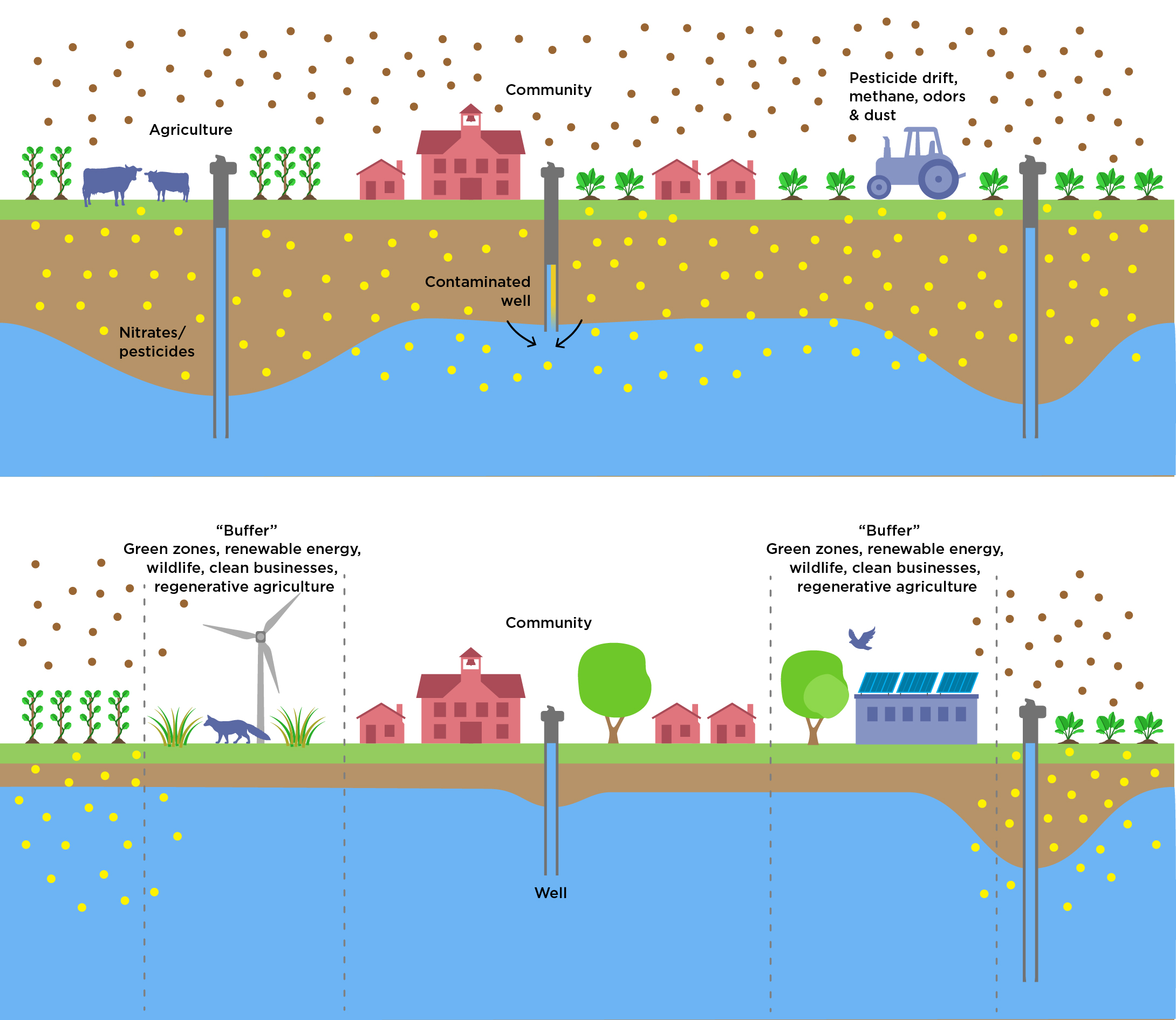With over 250,000 vehicles in service, the United States Postal Service (USPS) has one the world’s largest truck fleets. Over the past several years, the USPS worked to plan the replacement of its aging delivery truck fleet with a mix of both electric and combustion vehicles. If electric delivery vehicle deployment is maximized, this transition could have significant positive impacts on both air quality and the larger adoption of commercial electric vehicles.
I’ve blogged in detail about this effort, focusing mainly on the severe analytical shortcomings in the Postal Service’s 2021 study of air quality, climate, economic, and technological aspects of the new fleet of vehicles, known as the Environmental Impact Statement (EIS). Quite a bit has happened since the EIS was published and, thanks in part to our strong advocacy on the issue, a handful of lawsuits, and significant funding through the Inflation Reduction Act, the Postal Service announced it would increase the share of zero-emission vehicles (ZEVs) in their new delivery fleet from 10 percent to 62 percent. A few weeks back, the Postal Service released an updated analysis supporting this increase, called the Draft Supplementary Environmental Impact Statement (SEIS), which examines the environmental and economic impacts of several potential fleet replacement strategies.
From a high level, the updated plan seems significantly improved: the percentage of ZEVs in the fleet has increased substantially, they’ve signaled that they plan to focus the deployment of ZEVs in communities experiencing environmental injustices, and they’ve committed to purchasing only ZEVs after 2026. This is all great news.
However, there are still several unaddressed flaws in their analysis that lead to undervalued benefits and overinflated costs of fleet electrification. If properly addressed, a more accurate analysis would likely show clear evidence for a plan that maximizes ZEV deployment within the fleet given the massive lifetime cost savings of ZEVs and the fact that, according to the USPS, 90 percent of routes could be served by electric delivery vehicles. A USPS fleet that maximizes electrification potential would not only help to reduce climate warming and air pollution but would help to make electric vehicles more commonplace in every community across the nation.
Still room for improving the analysis
I’ve tracked the Postal Service’s fleet replacement efforts for some time now and am consistently alarmed by the poor quality of their analysis and data inputs. One of the highlights of my year so far was reading a report published by the Postal Inspector General (somewhat akin to an independent auditor for the Postal Service) that stated they had serious concerns, “related to the evaluation of reasonable alternatives, total-cost of ownership cost inputs, and environmental emissions that the Postal Service should address as it prepares its SEIS.” How’s that for an affirmation?
It’s a hopeful sign to see a significant increase in the number of ZEVs the USPS plans to deploy, but there are still major flaws in the design, methods, and data inputs of their analysis in the SEIS. That said, I believe they could be easily addressed. Here are several key ways.
The need to include a maximum feasible electrification alternative
Environmental Impact Statements, including this draft SEIS, are built around analyzing different options, courses of action, or choices that governmental entities are considering to meet the purpose and need of proposed actions.
These options, referred to as “alternatives” in an EIS, should reflect the most likely, reasonable, and feasible potential courses of action. The objective of any EIS should be to provide an accurate and rigorous look at potential outcomes, but cherry-picking alternatives that fit or omitting feasible alternatives that do not fit an agency’s agenda can result in a biased analysis.
Unlike the original EIS, the SEIS did include at least one feasible alternative, but it still did not analyze an alternative including the maximum technically feasible ZEV deployment. The Postal Service noted in the SEIS that around 90 percent of all routes could be serviced by electric vehicles but did not analyze the costs and benefits of a 90 percent ZEV fleet. This major omission is disappointing as it potentially leaves additional fiscal and environmental benefits on the table, compared to their “preferred alternative” of a 62 percent ZEV fleet.
In the SEIS, the Postal Services suggests several reasons for not choosing a 100 percent electrification alternative that makes good sense, however, they do not make a reasonable case for not analyzing a 90 percent ZEV fleet and should include such an analysis in their final SEIS. While I do think it’s technically reasonable that, in the near term, some gasoline delivery vehicles may be needed for niche routes and situations, the Postal Service should be diligently pursuing electrification wherever feasible.
The importance of lifetime cost analysis
The angle at which the Postal Service chose to examine the potential economic costs and benefits of fleet electrification significantly limited their results. Where most economic studies of vehicle and fleet electrification look at costs over the life of the vehicle, the SEIS only looked at upfront costs. This cut out the meaningful lifetime fuel and maintenance savings that ZEVs provide, while inflating the total ZEV fleet cost estimate, given that electric vehicles tend to have higher sticker prices than their combustion counterparts.
Their original analysis did consider total costs but included ridiculous assumptions like, for example, that gasoline would cost around $2.50 per gallon in 2040. Instead of following the Inspector General’s suggestions to improve the cost inputs in the total-cost of ownership analysis and the U.S. Government Accountability Office’s suggestions to improve the credibility of its cost estimates, they cut it altogether. The Postal Service has often stated cost as a barrier to further electrification, but if they aren’t looking at the lifetime fleet costs and ignoring the significant cost and maintenance savings of battery-electric vehicles (BEVs), how can they make informed decisions related to cost?
The Postal Service claims that the electric delivery vehicles they are considering cost approximately 40 percent more than the combustion versions, however leaving it at this is simply unreasonable – they should be taking a long-term holistic look when considering updating a fleet that could be on the road for several decades. The overwhelming body of research is clear that electric delivery vans are approaching upfront price and total cost parity at rates much faster than other truck types. In fact, a January 2022 study by the International Council on Clean Transportation suggests that electric delivery vans with a 100-mile range have already reached total cost parity.
Appropriate infrastructure cost estimates
There are several other incorrect assumptions within the analysis that undervalue the benefits and overinflate the costs of BEVs. One that is particularly meaningful is the Postal Service’s assumption that each electric NDGV would need its own dedicated charger. In reality, it is highly unlikely that a ratio of 1-to-1 would be necessary. Each of the battery-electric models under consideration will have a minimum operational range of 70 miles, of which a Level 2 charger can provide a full charge to around 8 hours, and only two percent of postal routes exceed 70 miles (according to a 2022 report by the Inspector General). Why then are so many costly chargers necessary?
Sure, there will be select cases of longer routes and areas with range-impacting weather that could need a higher ratio of chargers, but the new fleet could reliably operate on both fewer chargers as well as a mix of charging options. The same Inspector General study I referenced above suggested that the Postal Service consider a mix of Level 2 and less costly Level 1 chargers. This would reduce the average cost of chargers in the fleet by around 40 percent.
Clearly, there are more options to consider when it comes to charging the fleet. Estimating that each vehicle will need a dedicated charger is an unrealistic assumption that falsely inflates the cost of BEVs, limiting the potential benefits from their increased deployment.
Each of these examples hearkens back to some of my biggest complaints with the original EIS – that they were using the study to support foregone conclusions, rather than doing real analysis to better understand their fleet replacement plan. Good, lasting, and meaningful public policy is based on – you guessed it – objective and transparent science. Decisions of policymakers and agency decision-makers must be driven by rigorous analysis.
A more realistic look at environmental justice
One notable improvement in the SEIS was the realization that this plan would, in fact, affect disproportionately impacted (DI) communities. In its original study, the Postal Service simply stated, “there would be no or negligible impacts on environmental justice.” However, the science is clear that certain neighborhoods, all too often majority communities of color, experience exposure to air pollution and resulting negative health outcomes at rates much greater than others. Given the Postal Service’s massive nationwide fleet, any plan to transition to more modern and cleaner delivery vehicles would most certainly impact these communities. Our goal here is to make sure that the most impacted communities see a fair share of the fleet electrification benefits, including air quality and infrastructure improvements.
Where the old EIS wrote off any potential impacts – good or bad – the updated SEIS includes an in-depth analysis of the locations best suited for ZEV deployment using several well-vetted tools including the Environmental Protection Agency’s EJSCREEN. The analysis examined several factors including historic economic and environmental issues, the amount of current pollution burden, and levels of economic, climate, and health risks. While environmental justice was not a factor in determining where BEVs would be deployed, it turns out that the locations best suited for electrification from an infrastructure and use case point of view are most often located in DI communities – around 85 percent in fact. This is because those sites were located in more urbanized and industrialized areas where charging infrastructure may be easier to develop.
CleanAirNow, a Kansas City-based environmental justice leader that organizes efforts around electrification, air quality, and equitable labor transitions to clean energy, has been quite instrumental in not only pushing for expanded USPS electrification but for the new electric delivery vehicles to be deployed first in communities most impacted by unhealthy air quality. In a recent conversation with Beto Martinez, the executive director of CleanAirNow, he reiterated the need to center environmental justice and the health of those most impacted. He noted that the areas the organization represents are, “high-risk zip codes where asthma, heart disease, and cancer are above the national average, which links back to environmental health hazards” from long-term exposure to breathing toxic emissions from transportation.
I would agree with Beto that, “we don’t want pollution to be delivered with our mail” and that the Postal Service should commit to an accelerated deployment of zero-emission delivery vehicles in areas of persistent air pollution and poverty.

Benefits and co-benefits of ZEV deployment
The potential to concentrate electric delivery vehicle deployment in DI communities is great news for several reasons. First and most obviously, replacing 30-plus-year-old delivery vehicles predominately with ZEVs will help to reduce air pollution in these areas. Second, and perhaps equally important in the long run, is that any significant fleet deployment of electric delivery vehicles in a concentrated area will help to jumpstart the grid and infrastructure work needed to usher in further ZEV deployment. That is to say that the Postal Service’s plan to transition to a zero-emission fleet can be a catalyst for the larger transition for delivery and commercial fleets. Furthermore, the energy grid and infrastructure upgrades ushered in by the Postal Service may create opportunities for co-benefits in DI communities, who are often among the last to see infrastructure modernizations.
As the Postal Service, or any other large fleet owner for that matter, transitions to ZEVs, working in close coordination with adjacent businesses and fleets could lead to efficiencies in permitting and usher in greater economies of scale for infrastructure construction. The current norm for electrifying fleets is to work one-on-one with power companies and grid owners when developing large-scale vehicle charging infrastructure, but imagine the potential to reduce developmental roadblocks if a more cooperative approach was taken.
The Postal Service states that the majority of facilities targeted for ZEV deployment will receive over 100 vehicles and that these facilities are often located in dense urban or industrialized areas. What if they could work together with neighboring fleets to ready their sites for a zero-emission freight future? To my knowledge, this has yet to be studied in detail, but I have a hunch that it could accelerate deployment through increased efficiencies and perhaps also allow co-benefits beyond air quality to the surrounding communities.
Lasting and Catalyzing Impacts
USPS trucks are one of the most visible and familiar vehicles in any community. Electrifying the USPS fleet will have immediate benefits across the country from reduced climate-warming emissions and air pollution, and that’s reason enough to make the switch. But transitioning the USPS’ substantial fleet to electric will have long-term benefits, too: it will make electric vehicles and the infrastructure that supports them more familiar and more embedded in the lives of everyone who gets mail delivered, spurring a bigger market, and helping speed ZEV adoption towards a more sustainable and equitable freight system. Just as the Postal Service was instrumental in expanding the commercialization of airplanes in the early 1900s, so too can it be a driver of freight electrification. What’s more, maximizing the potential co-benefits of this transition could serve as a catalyst for the larger transition to ZEVs. It’s feasible today, and it will help build the foundation for a cleaner transportation future.

















































